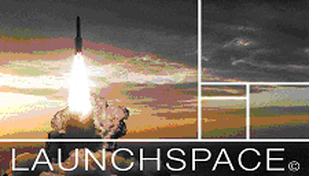Space Launch, Inc.
Reusable Launch Technology
Commercial Reusable Launch Vehicles
Popular Mechanics on Astroid Mining
http://www.popularmechanics.com/science/space/news/the-tech-well-need-to-mine-asteroids-11644892
Peter Diamandis on Space Mining
http://www.dailymotion.com/video/xqhafm_the-future-of-asteroid-mining_tech
Peter Diamandis and Steven Hawking on Space
http://www.dailymotion.com/video/xa2s01_stephen-hawking-in-space-with-diama_tech
Space Debris
http://actu.epfl.ch/news/cleaning-up-earth-s-orbit-a-swiss-satellite-tackle/
Agenda 21
http://www.un.org/esa/dsd/agenda21/
Space Launch in Development of L1 Global Sun Shade to Reduce Global Warming and Institute Climate Control.
Popular Mechanics on Astroid Mining
http://www.popularmechanics.com/science/space/news/the-tech-well-need-to-mine-asteroids-11644892
Peter Diamandis on Space Mining
http://www.dailymotion.com/video/xqhafm_the-future-of-asteroid-mining_tech
Peter Diamandis and Steven Hawking on Space
http://www.dailymotion.com/video/xa2s01_stephen-hawking-in-space-with-diama_tech
Space Debris
http://actu.epfl.ch/news/cleaning-up-earth-s-orbit-a-swiss-satellite-tackle/
Agenda 21
http://www.un.org/esa/dsd/agenda21/
Space Launch in Development of L1 Global Sun Shade to Reduce Global Warming and Institute Climate Control.
|
February 9, 2015 Launchspace Training _____________________________________________________________ One Space Debris Solution (Launchspace Staff Writers) Bethesda, MD - Lately, the topic of "space debris" has been in the news a great deal. Concern within the space community is increasing. Spacefaring nations are becoming increasingly aware of the potential impact of this growing threat to future space flight. Thanks to recent increases in exposure and public awareness, government officials are well aware of the issues. There are international debris commissions and committees studying potential mitigation and remediation solutions. Many industrial organizations are pursuing federal support for new technologies and systems that will mitigate debris impacts. There is even a new academic center dedicated to orbital debris studies, research and education at the University of Maryland. High anxiety is running rampant among geostationary satellite operators and low-orbiting constellation owners. Many mitigation techniques have been studied and some are being pursued. A number of new satellites have the ability to either de-orbit or move out of the way after completing their missions. Upper-stage providers have been asked to vent their tanks of residual propellant before discarding them. Satellites able to maneuver do so to avoid close-conjunction events. The Air Force has been beefing up its satellite and debris tracking capabilities. National and international working groups continue to meet regularly to assess increasing collision threats and recommend actions for all spacefaring nations. The world of satellite operators may be just one major satellite collision event away from panic. Instances of close conjunction events in those few highly congested orbital bands have increased dramatically in the past decade. For example, the frequency of potential encounters between active satellites and large debris objects has reached a high level. Odds are that there will be another satellite/debris encounter sometime in the not-too-distant future. This could be tomorrow, or next month, or next year, or next decade. We don't know when, but it will surely happen. When it does, several bad things may happen to an unfortunate satellite operator. A spacecraft may have to be replaced. The frequency of close encounters in orbits near that of the encounter could suddenly increase to levels that will cause increased anxiety to several operators. Satellite insurance providers could be forced to raise premiums on in-orbit performance to record high levels. Future launch plans for almost all low-orbiting satellites may have to be reviewed and changed. Space-based services to the international society may diminish over time. The worldwide impact on national economies and the quality of life are not even calculable. Although space debris proliferation presents a long-term challenge that will require a long-term solution, the immediate problem is quite bounded. Recent studies of debris distribution reveal the near-term troubled zone to be a spherical shell between the altitudes of roughly 700 km and 1100 km. This is where a great many operational satellites and large debris objects co-exist. One suggested near-term partial solution by NASA is to remove a limited number of large debris objects that reside in the high density zone. This approach could retard the growth of collision risk levels. Such an operation would have to be continued on a long-term basis, requiring the removal of some large objects each year. Such debris removal missions are possible, but complex and expensive. In an ideal world, all affected nations and parties would collaborate and contribute to the creation of a massive new space effort. There are literally well over 1,000 large debris objects that pose immediate threats. Of these, a few of the most threatening objects could be removed annually. There are a number of ways to do this. Let's take one approach as an example. Start by developing a specially designed "Debris Collection Spacecraft." Each DCS could be capable of maneuvering and rendezvousing with one or more objects, but one at a time. Each object may be stored for later de-orbit, or fitted with an autonomous unit that changes the object's orbital speed in such a way that it moves out of the "debris zone." If, for example, each DCS is able to deal with four objects, assuming only eight objects need to be removed annually, the job will require two DCS missions each year. Any removal operation must be transparent to commercial, civil and security satellite operations. In order to be effective, the removal program needs to start almost immediately to insure objects are removed in time to avoid potential future collisions. The development costs of DCS spacecraft may be in the several hundred-million-dollar neighborhood, with an annual operating budget in the same neighborhood. This seems like an expensive program, but the cost of doing nothing may be much greater. For all those who are involved, concerned and interested in the space debris crisis, let Launchspace bring you up to date on the debris issues, threats and solutions. Check it out our one-day presentation: http://www.launchspace.com/New%20Site/Courses/1060.html ________________________________________________________________________ Featured short course - available for customized presentation at your facility Contact Launchspace for a quote: [email protected] Space Debris: Issues, Threats and Solutions DURATION: ONE DAY LOCATION: AT YOUR FACILITY COURSE NO.: 1060 COURSE SUMMARY Since 1957, artificial satellites and launch vehicles have created an ever growing number of orbiting debris objects, from a few microns to several meters in size. In recent years a number of international agreements have been made to limit the growth rate of debris. However, there is no serious program to reduce the amount of existing debris. Recent developments such as the proliferation of debris from the Chinese ASAT test of 2007 and the 2009 collision of an Iridium satellite with a Russian Cosmos have raised level of urgency to actively manage the debris situation. Mitigation approaches have been pursued and many reduction techniques have been suggested. Many new spacecraft are now able to maneuver out of the way at their end of life. But, little is being done to reduce existing debris. This special and timely course attempts to explain the dangers and the options associated with the growing debris problem. COURSE MATERIALS: Each attendee receives a soft or hard copy of the presentation materials. WHO SHOULD ATTEND:
WHAT YOU WILL LEARN:
COURSE OUTLINE:
INSTRUCTOR: DR. MARSHALL H. KAPLAN Marshall H. Kaplan, Ph.D., is a recognized expert in space flight technologies, orbital mechanics and debris retrieval. He was the first to study space junk retrieval and was instrumental in the safe reentry of the Skylab Space Station in 1979. Foxnews.com recently aired a story about his four decades of research on this topic. Dr. Kaplan is one of only a few experts in the field of space debris control and reduction. He has over four decades of academic and industrial experience, having served as Professor of Aerospace Engineering at the Pennsylvania State University and presenting hundreds of courses on space technology in the U.S., Europe, South America and Asia. In addition to publishing some 100 papers, reports, and articles on aerospace technologies, he is the author of several books, including the internationally used text, Modern Spacecraft Dynamics and Control. Dr. Kaplan is a member of the AIAA Technical Committee on Space Transportation and holds advanced degrees from MIT and Stanford University. ____________________________________________________________________________________ LAUNCHSPACE is an educational and consulting organization dedicated to training and continuing education for space professionals and to supporting the space community. We offer the largest array of customized client-site courses to government agencies and industry, and a full spectrum of technical and management expertise in support of space programs. Click on www.Launchspace.com to see our extensive catalog of course offerings. Any of these can be customized for your needs, or we can create a new course for you. Through our training programs we have helped thousands of engineers and managers become more productive in their careers. Our courses and programs are unique and customized for our clients. We focus on critical skills in all areas of spaceflight, spacecraft and launch systems. Our consulting activities include technical innovation, problem solving, program management, proposal development, systems engineering and litigation expertise. We have been involved with many major space programs over the past four decades. Our experts span the full spectrum of space challenge areas. We are available to address your needs now and in the future. Please contact us for more information about our services at [email protected] ______________________________________________________________________________ Launchspace Training Phone: 202 258 6133 | Email: [email protected] Copyright © 2014. All Rights Reserved. Forward this email This email was sent to [email protected] by [email protected] | Update Profile/Email Address | Rapid removal with SafeUnsubscribe™ | Privacy Policy. launchspace | P.O. Box 34473 | Bethesda | MD | 20827-0473 Innovation for Space Access
_
|
Social Network Innovation
Social Networking with BallotBux for Innovations: www.ballotbux.com
|
Space Launch
Space Launch is developing commercial reusable space infrastructure to clear space debris endangering communication satellites primarily in low-earth-orbit (LEO) and deploy satellite constellations to increase the utility of the broadband spectrum. National security, GPS, and commercial telecommunications rely on satellites and reliable space access to provide the critical link to the information super highway and cloud based storage.
|
The Space Shuttle Program has been the first semi-reusable launch system for space access servicing the International Space Station and deployment of satellites at a steep price tag of $500 million a launch. In 2011, with the passing of the Shuttle, a more economical commercial launch system will have to take over the roll of space access in the arena of space tourism, satellite launch, and national security. The Space Launch-Reusable Launch Vehicle (RLV) Program is one of the viable methods of space remediation-retrieving space debris providing cost effective space access before the inevitable take place including LEO satellite collisions, solar flares, and asteroid impacts that could result in catastrophic scenarios destroying our network of cloud based grids and our way of life. There exist an ever growing 2.5 billion wireless mobile devices and 1.9 billion global computer end users dependent on the grid connecting to cloud base storage for the Department of Defense (DOD) and commercial applications.
|
Team Space Launch

Space Launch is developing the reusable space infrastructure to produce the next generation of commercial Space Shuttle Program for efficient global transportation and telecommunications with the alliance of LaunchSpace www.launchspace.com and leading institutions. Space Launch intends to work with DARPA, Air Force Research Labs, and ORS to further research on Reusable Launch Infrastructure.
DARPA
http://www.darpa.mil/
The Defense Advanced Research Projects Agency (DARPA) is an agency of the United States Department of Defense responsible for the development of new technology for use by the military. DARPA has been responsible for funding the development of many technologies which have had a major effect on the world, including computer networking, as well as NLS, which was both the first hypertext system, and an important precursor to the contemporary ubiquitous graphical user interface.
Its original name was simply Advanced Research Projects Agency (ARPA), but it was renamed to "DARPA" (for Defense) in March 1972, then renamed "ARPA" again in February 1993, and then renamed "DARPA" again in March 1996.
DARPA was established during 1958 (as ARPA) in response to the Soviet launching of Sputnik during 1957, with the mission of keeping U.S. military technology more sophisticated than that of the nation's potential enemies. From DARPA's own introduction,[2]
DARPA’s original mission, established in 1958, was to prevent technological surprise like the launch of Sputnik, which signaled that the Soviets had beaten the U.S. into space. The mission statement has evolved over time. Today, DARPA’s mission is still to prevent technological surprise to the US, but also to create technological surprise for its enemies.
DARPA is independent from other more conventional military R&D and reports directly to senior Department of Defense management. DARPA has around 240 personnel (about 140 technical) directly managing a $3.2 billion budget. These figures are "on average" since DARPA focuses on short-term (two to four-year) projects run by small, purpose-built teams.
The Defense Advanced Research Projects Agency (DARPA) is an agency of the United States Department of Defense responsible for the development of new technology for use by the military. DARPA has been responsible for funding the development of many technologies which have had a major effect on the world, including computer networking, as well as NLS, which was both the first hypertext system, and an important precursor to the contemporary ubiquitous graphical user interface.
Its original name was simply Advanced Research Projects Agency (ARPA), but it was renamed to "DARPA" (for Defense) in March 1972, then renamed "ARPA" again in February 1993, and then renamed "DARPA" again in March 1996.
DARPA was established during 1958 (as ARPA) in response to the Soviet launching of Sputnik during 1957, with the mission of keeping U.S. military technology more sophisticated than that of the nation's potential enemies. From DARPA's own introduction,[2]
DARPA’s original mission, established in 1958, was to prevent technological surprise like the launch of Sputnik, which signaled that the Soviets had beaten the U.S. into space. The mission statement has evolved over time. Today, DARPA’s mission is still to prevent technological surprise to the US, but also to create technological surprise for its enemies.
DARPA is independent from other more conventional military R&D and reports directly to senior Department of Defense management. DARPA has around 240 personnel (about 140 technical) directly managing a $3.2 billion budget. These figures are "on average" since DARPA focuses on short-term (two to four-year) projects run by small, purpose-built teams.
|
Defense Advanced Research Project Agency
|
Johns Hopkins
|
Stanford University
|
Massachusetts Institute of Technology
|
University of California at San Diego
|






